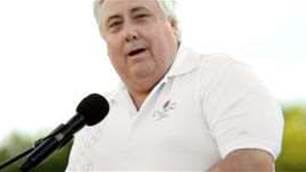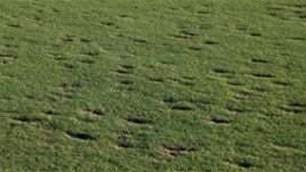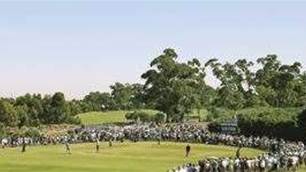It seems the opening three months of play on the PGA Tour have been dominated by a handful of discussions – Tiger’s form, the continual rise of Rory, Keegan Bradley’s spitting, long putters and, the bane of the sport, slow play.
It seems the opening three months of play on the PGA Tour have been dominated by a handful of discussions – Tiger’s form, the continual rise of Rory, Keegan Bradley’s spitting, long putters and, the bane of the sport, slow play.
Slow play chat rears its head nearly every week now on Tour and for good reason. A growing number of players are so slow that you can almost see the grass growing around their feet as they prepare to hit a shot.
The recently deposed World No.1 Luke Donald has become so frustrated with the pace of play he vented with a Twitter tirade directed at the PGA Tour and some of his Tour colleagues. “It’s not that hard, be ready when it’s your turn ... slow play is killing our sport.”
He continued: “I could rant all day long, don’t think anything will ever change as the slow players don’t realise they are slow.”
The key point Donald makes is that too many players are simply not ready to hit when it’s their turn. If these slowpokes spend two minutes working out club selection, wind direction and shot type before even starting their pre-shot routine and settling in over the ball that accumulates into a lot of time during a round when nothing happens.
Some of the worst offenders are Zach Johnson, Jim Furyk, Jonathan Byrd, Ben Crane (although he has worked hard in recent times to speed up) and J.B. Holmes. Two Aussies who earn the occasional mention for their pedestrian play are Jason Day and Nick O’Hern. For mine, the worst offender of all is Kevin Na, who doesn’t need to be put him on the clock by the Tour, he needs to be put on the calendar.
Sadly, slow play on the PGA Tour is going to continue unabated unless something is done to penalise those players boring us all with their time wasting. Forget one-shot penalties for pace of play. When the Tour starts talking about docking world ranking points for repeat infringements, the slow coaches might get a wriggle on.
I mention all this because it has become plainly obvious to me that what happens on Tour and is beamed into our living rooms ends up translating into the way a lot of amateur golfers play the game. If slow play is killing the game as a viewing spectacle at the top end, imagine what its doing to the game at the grass roots.
Slow play is the touchiest of subjects with any golfer. Accuse a playing partner or someone in a group ahead of being slow and you might get slapped across the face with a golf glove and ordered to duel behind the 18th green at dawn.
No one likes to be told they are slow. But the truth of the matter is that most of us are slow golfers. You might not be painfully slow but I’m sure every golfer, every single one of us, can be faster than we are currently.
The key is being ready to play when it’s your turn. If you don’t have a club in your hand when it’s your turn to hit, you’re already wasting time.
Here is a case in point where slow play can completely ruin what is a meant to be a great day out on the course. Admittedly, it is a worst-case scenario but I’m sure most of you will have encountered similar.
I played in a golf day a while back with a couple of mates and an acquaintance of theirs, called Neil. Neil, I was to discover, was a 22-handicapper with more money then sense. He rolled up to the tee pulling a huge staff bag behind him. He was sporting forged muscleback irons from the same manufacturer, an unused driver and some new fairway metals. The only item of equipment not making its golf course debut that day was his putter. I thought he was a low marker that was, until he stepped on the 1st tee and rolled every pre-shot routine he had seen from the slowest players on the PGA Tour into one.
Then, as he stood over the ball, he fidgeted and wiggled like he had ants in his pants. Just when all this stopped and I thought he was going to make a swing, he backed away and looked to the sky like God had changed the wind direction purposely to put him off his swing. With the zephyr gone, he started his routine from scratch, did his wiggle and fidget dance moves, swung the club back and sliced the ball 50 metres right and out-of-bounds. He hit two more drives O-O-B before acknowledging he couldn’t score on the hole.
At the 2nd, he kept the new, and now unpopular, driver in his bag. Pulled a 3-metal from the bag, went through his routine, wiggled and fidgeted and then thinned one down the middle of the fairway, leaving him exactly 173 metres from the flag. I know this because when it was his turn to play he reached into his bag and produced a laser rangefinder. He then proceeded to find out how far he had, tossed some grass in the air for wind direction and then worked through his pre-shot routine. Then came the swing, which saw him gouge a crater out of the fairway with his 3-iron that moved the ball about 15 metres.
I put up with this kind of scenario for the next five hours and 20 minutes. He pulled the rangefinder out for every shot longer than a chip and not once did he get close to hitting a shot that covered the distance flashing back at him from the device. All this amounted to the most excruciating round of golf I have ever played.
And what made it worse was that Neil could not recognise he had a slow play problem. On the four or five occasions when I suggested we should move a bit faster, he scoffed and said: “Why, what’s your hurry?”
After the round, he asked me what he could do to improve his game. I simply couldn’t help myself. I politely suggested his game would benefit greatly by not taking so much time preparing to hit. He needed to think less before swinging. To that end, I added, he should sell the rangefinder on eBay and use the money to get some lessons.
I learned recently that he kept the rangefinder, he didn’t have any lessons but he had switched club manufacturers. His handicap is now 25 and even my mates, his good friends, won’t play with him anymore because he is so excruciatingly slow.
I’m not singling Neil out here because he’s a high handicapper, far from it. I’ve played with 27 markers that play faster than guys on Tour. The fact is there are plenty of club and social golfers around like Neil, who don’t think they are slow players because they see what the pros do in their routines and think if they emulate them they’ll play better. Problem is, they are following the snails, not the road runners.
How does slow play affect your golf? Are you a slow player? What experiences have you had? Let me know your thoughts via email on golf@golfaustralia.com.au or by leaving a comment below.
For daily golf news, Tour player retweets and comment updates, follow me on Twitter at brendanjames2.
Related Articles

Palmer Has Titantic Opportunity

Tossing Bricks & Bouquets














